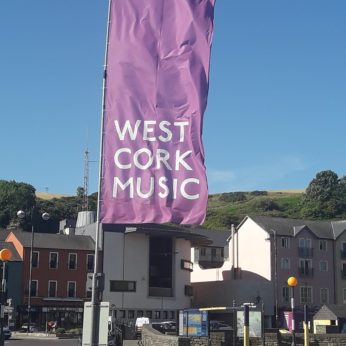Composer: Ludwig van Beethoven (b. 1770 - d. 1827)
Performance date: 01/07/2018
Venue: St. Brendan’s Church
Composition Year: 1806
Duration: 00:30:31
Recording Engineer: Ciaran Cullen, RTÉ
Instrumentation: 2vn, va, vc
Instrumentation Category:String Quartet
Artists:
Quatuor Danel (Marc Danel, Gilles Millet [violins], Vlad Bogdanas [viola], Guy Danel [cello]) -
[quartet]

Ludwig van Beethoven [1770–1827]
String Quartet No.9 in C major Op.59/3 [1806]
Andante con moto – Allegro vivace
Andante con moto quasi allegretto
Minuet – grazioso
Allegro molto
The harmonically mysterious introduction is surely Beethoven’s homage to Mozart’s famous Dissonance Quartet, also in C major. The composer Robert Simpson was convinced that this work charts Beethoven’s grappling with the terrible fact of his deafness, which he had already been struggling with for several years. Certainly he wrote on the sketches for the last movement: Make no secret of your deafness, not even in art.
The strange confused world of the introduction is followed by two chords and a concertante display by the first violin. This leads directly into the brilliance of a C major Allegro, power-driven by an enormous, exuberant energy bursting out in every direction. The second subject temporarily slows the pace before the exposition is rounded off by the driving rhythm led by the cello. After the repeat, the development concerns itself with the virtuosity of the first violin and the questioning phrases of the second subject, sensibly leaving the boisterous main theme out of the argument. The recapitulation lets him in again but the coda brings the movement to an uncertain end, almost as directionless as the opening.
Robert Simpson saw the second movement as describing the solitary imprisonment to which Beethoven’s deafness confined him. This is a fanciful description but few people have had a deeper knowledge of Beethoven’s quartets. The sketches for this movement also show the repeated note theme that ends up as the Allegretto of the Seventh Symphony, also in A minor and also dominated by a strong rhythmical line. In the quartet this is provided by the cello’s inspired pizzicato part, the foundation of the movement’s plaintive melancholy.
The third movement is a relaxed minuet harking back to Mozart again, a gracious and stylised dance reminiscent of the rococo era. The Trio is more dynamic and forceful with some spectacular decorations. This easeful interlude is doubtless intended as a contrast to the irresistible force of the fugal finale, which explodes upon us like a whirlwind. It develops into a near moto perpetuo that is a virtuoso showpiece for the players, and its high spirits display Beethoven’s energetic mastery of the medium.
Francis Humphrys
Copyright © 2025 West Cork Music. All rights reserved.
Designed and developed by Matrix Internet